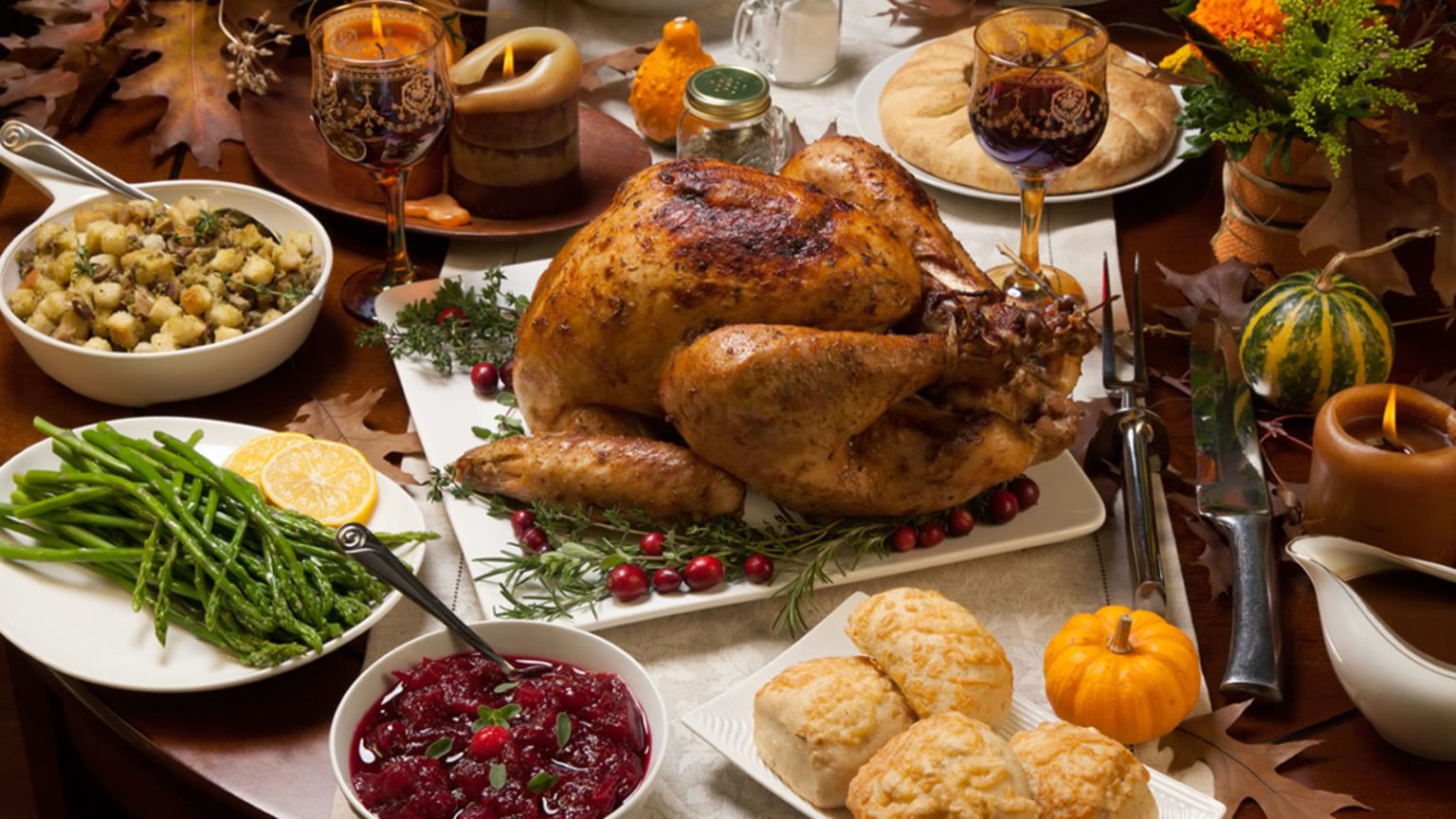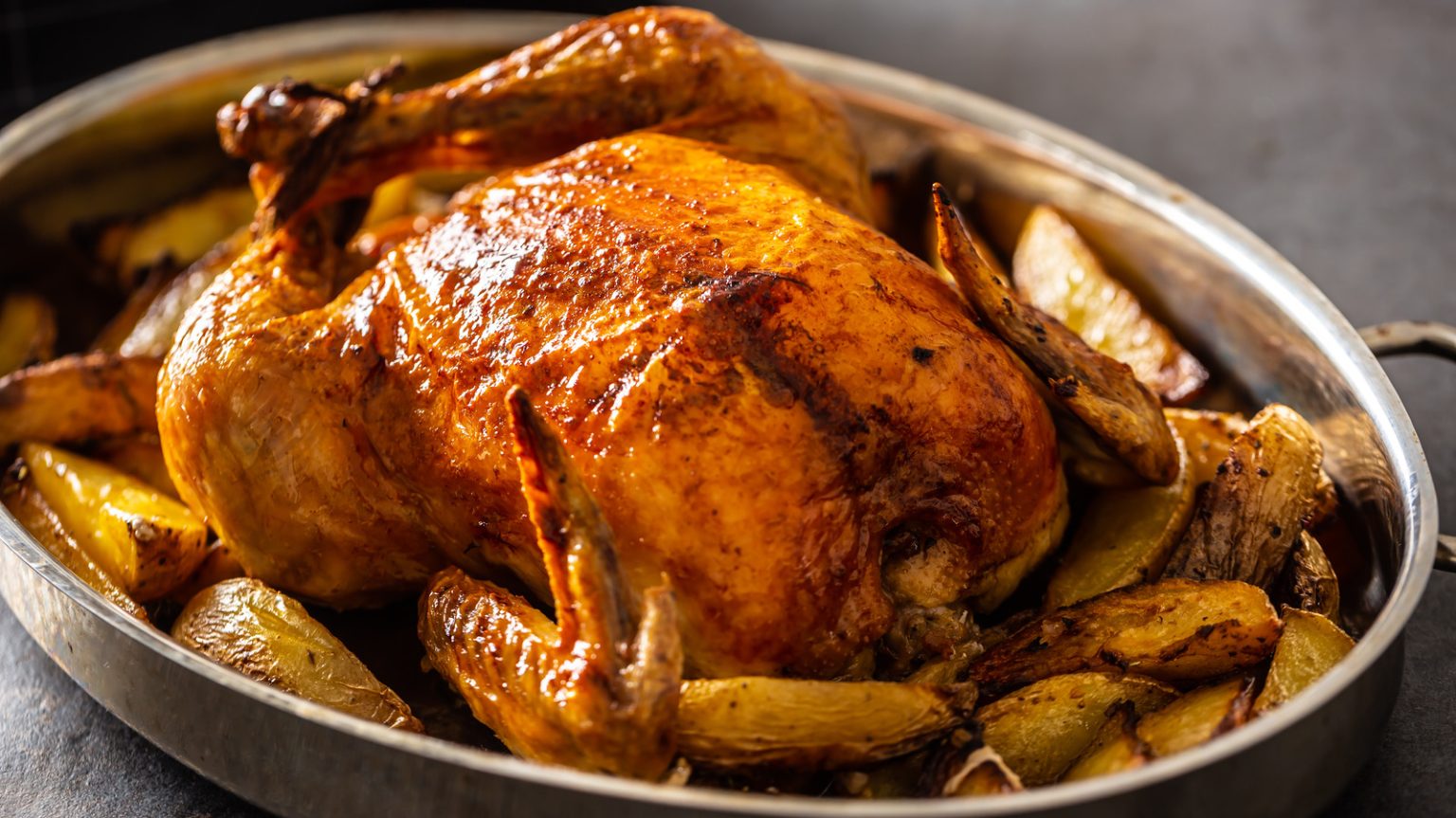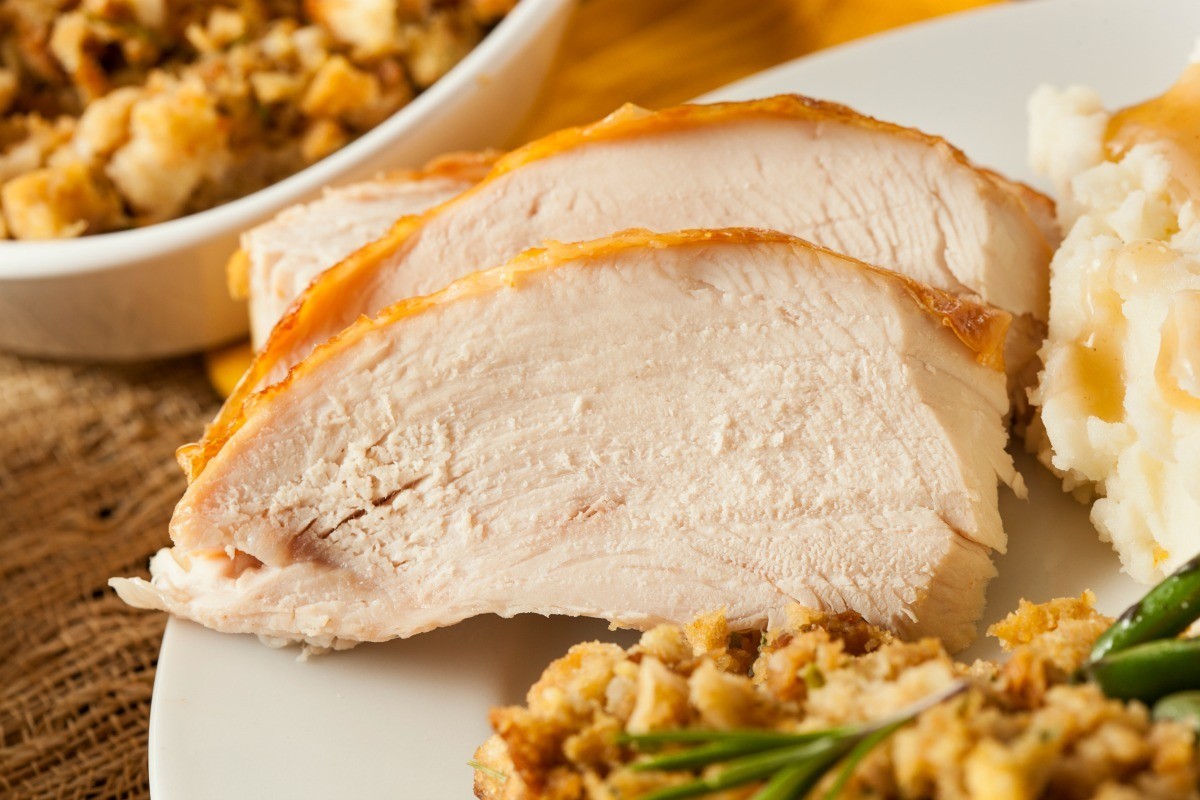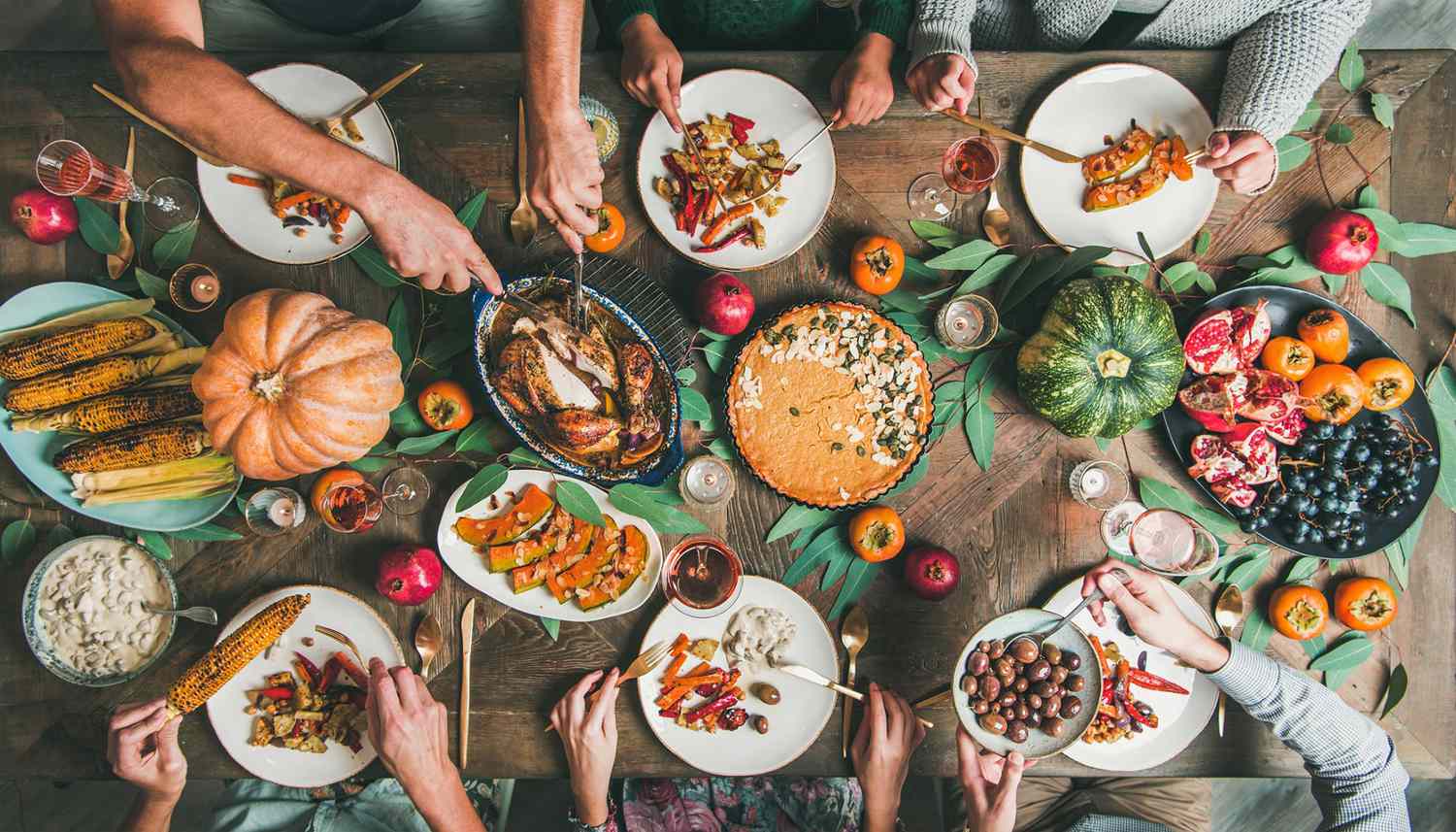When do you serve Roast Turkey:
Turkey is a versatile dish that can be served on various occasions, depending on cultural traditions and personal preferences. Here are some common occasions when serving turkey is appropriate:
- Thanksgiving: In the United States, Thanksgiving is the most traditional occasion for serving turkey. It’s typically enjoyed on the fourth Thursday of November and is a time for families and friends to come together and give thanks.
- Christmas: Turkey is also a popular choice for Christmas dinners in many countries. It can be served alongside other festive dishes and is often the centerpiece of the holiday meal.
- Easter: In some cultures, turkey is served as part of the Easter feast, particularly in North America and parts of Europe.
- Other Holidays: Turkey can be served on various other holidays and special occasions, such as New Year’s Day, Hanukkah, or birthdays, especially if you’re hosting a large gathering.
- Casual Gatherings: Turkey doesn’t have to be reserved only for holidays. It can also be served at casual gatherings, potlucks, or dinner parties throughout the year.
Serving Roast Turkey for Lunch or Dnner is a good idea:
Here are some great reasons to chooser Roast Turkey as the hero of your meal:
- Versatility: Turkey is a versatile protein that can be prepared in various ways, including roasting, grilling, smoking, frying, and more, allowing for diverse culinary creations to suit different tastes and occasions.
- Nutritional Value: Turkey is a lean meat that is rich in protein, vitamins (such as B vitamins), and minerals (such as iron and zinc), making it a nutritious choice for a well-balanced meal.
- Traditional and Familiar: Roast turkey is a classic and familiar dish, especially during holidays like Thanksgiving and Christmas, evoking feelings of comfort, nostalgia, and togetherness.
- Feeds a Crowd: A whole roast turkey can feed a large number of people, making it an ideal choice for gatherings, parties, and celebrations where there are many guests to serve.
- Accommodates Various Diets: Turkey can accommodate various dietary preferences and restrictions, such as gluten-free, low-carb, or paleo diets, making it suitable for a diverse range of guests.
- Complements a Variety of Sides: Roast turkey pairs well with a wide array of side dishes, such as mashed potatoes, stuffing, cranberry sauce, and vegetables, allowing for a balanced and satisfying meal.
- Leftovers: Roast turkey often yields delicious leftovers that can be used to make sandwiches, soups, salads, and other dishes, providing additional meals and reducing food waste.
Overall, serving roast turkey at a dinner provides a delicious, nutritious, and versatile option that can satisfy guests of all ages and dietary preferences, while also adding a sense of tradition and festivity to the occasion.
What are the parts of Turkey that you can cook for a special celebration:
The parts of a turkey can be broken down into several components, each with its own culinary uses. Here are the main parts of a turkey:
- Breast: The breast is the large, meaty part of the turkey located on the front of the bird. It is typically white meat and is considered one of the most tender and popular parts of the turkey.
- Thighs: The thighs are the two large, darker meat portions located on the back of the turkey, above the drumsticks. Thigh meat is juicier and more flavorful compared to breast meat, although it tends to be fattier.
- Drumsticks: The drumsticks are the lower portion of the turkey legs. They consist of dark meat and are often considered a favorite by those who enjoy richer, more flavorful cuts.
- Wings: The wings are the two smaller portions of the turkey located on either side of the breast. While they contain less meat compared to the breast, thighs, and drumsticks, turkey wings can still be cooked and enjoyed as a tasty appetizer or snack.
- Giblets: Giblets refer to the internal organs of the turkey, including the heart, liver, gizzard, and neck. These organs are often removed from the cavity of the turkey before cooking and can be used to make gravy or stock for added flavor.
- Back: The back of the turkey consists of the backbone and the surrounding meat. While not typically served as a standalone dish, the back can be used to make flavorful stocks or soups.
Each part of the turkey offers unique flavors and textures, and they can be prepared in various ways to create a delicious and satisfying meal.
How many ways can you cook a Turkey:
There are numerous ways to cook turkey, each resulting in different flavors and textures. Here are some common methods:
- Roasting: Roasting is perhaps the most traditional way to cook a whole turkey. The bird is seasoned, stuffed (if desired), and cooked in the oven until the meat is tender and the skin is golden brown. It’s often basted with butter or oil to keep it moist.
- Grilling: Grilling turkey can impart a smoky flavor and crispy skin. You can grill a whole turkey or individual parts such as breasts, thighs, or drumsticks. Using indirect heat and a meat thermometer can help ensure even cooking.
- Frying: Deep-frying turkey results in a crispy skin and juicy meat. The turkey is submerged in hot oil until fully cooked. It’s important to follow safety precautions when deep-frying, as it can be a hazardous method if not done properly.
- Smoking: Smoking turkey involves cooking it slowly over low heat in a smoker or grill. This method infuses the meat with a rich, smoky flavor. It’s essential to use hardwood chips or chunks for smoking, such as hickory, apple, or cherry.
- Spatchcocking: Spatchcocking involves removing the backbone of the turkey and flattening it before cooking. This method allows for quicker, more even cooking, resulting in juicy meat and crispy skin. Spatchcocked turkeys can be roasted, grilled, or smoked.
- Braising: Braising involves cooking the turkey slowly in liquid, such as broth or wine, until it’s tender and flavorful. This method is often used for turkey legs or thighs and can be done on the stovetop or in the oven.
- Sous Vide: Sous vide involves cooking the turkey in a vacuum-sealed bag in a water bath at a precise temperature for an extended period. This method results in incredibly tender and juicy meat, although it requires specialized equipment.
- Pressure Cooking: Pressure cooking is a quick and convenient way to cook turkey, especially if you’re short on time. Turkey pieces or a whole turkey can be cooked in a pressure cooker with liquid and seasonings for moist and tender results.
These are just a few ways to cook turkey, and there are countless recipes and techniques to explore within each method. The best cooking method depends on your preferences, available equipment, and desired flavors.
Why is my Turkey always dry:
Dry turkey can result from a variety of factors, but here are some common reasons why your roast turkey might turn out dry:
- Overcooking: One of the most common reasons for dry turkey is overcooking. Turkey is fully cooked and safe to eat when it reaches an internal temperature of 165°F (74°C) in the thickest part of the bird. Cooking it beyond this temperature can cause the meat to become dry and tough.
- Not Using a Meat Thermometer: Without a meat thermometer, it’s challenging to know precisely when your turkey is done. Relying solely on visual cues or cooking times can lead to overcooking. Invest in a reliable meat thermometer and use it to monitor the temperature throughout the cooking process.
- Choosing the Wrong Cut: Different parts of the turkey have varying levels of fat and connective tissue, which affect moisture and tenderness. For example, the breast meat tends to be leaner and can dry out more quickly than dark meat like thighs and drumsticks. Consider cooking methods that retain moisture, such as brining or basting, when preparing lean cuts.
- Not Brining or Marinating: Brining or marinating the turkey before cooking can help add moisture and flavor to the meat. Brining involves soaking the turkey in a solution of salt and water, while marinating involves soaking it in a flavorful liquid. Both methods can help prevent dryness and enhance the taste of the turkey.
- Cooking at Too High Temperature: Cooking turkey at too high a temperature can cause the outer layers to cook too quickly, resulting in dry meat. It’s generally recommended to roast turkey at a moderate temperature (around 325°F or 163°C) to ensure even cooking and prevent dryness.
- Not Resting the Turkey: Resting the turkey after cooking allows the juices to redistribute throughout the meat, resulting in juicier and more tender slices. Let the turkey rest for at least 20-30 minutes before carving to retain moisture.
- Not Using Enough Fat: Turkey is a lean meat, so adding fat during cooking can help keep it moist. Basting the turkey with butter, oil, or broth periodically during roasting can help prevent dryness.
By addressing these factors, you can improve the moisture and overall quality of your roast turkey. Experiment with different cooking methods and techniques to find what works best for you and your preferences.
How do you keep a roast turkey warm before serving?
Keeping a roast turkey warm before serving is essential to ensure that it remains moist and at a safe temperature. Here are some tips for keeping a roast turkey warm:
- Tent with Foil: Once the turkey is fully cooked, remove it from the oven and tent it loosely with aluminum foil. This helps to retain heat and moisture while preventing the turkey from overcooking.
- Resting Time: Allow the turkey to rest for at least 20-30 minutes before carving. During this time, the juices redistribute throughout the meat, resulting in juicier and more tender slices.
- Use a Warm Oven: If you have oven space available, you can keep the roast turkey warm by placing it back in the oven at a low temperature (around 200°F or 93°C). Be sure to cover it loosely with foil to prevent drying out.
- Warm Serving Platter: Place the carved slices or whole turkey on a warm serving platter or tray. You can warm the platter by placing it in the oven for a few minutes before transferring the turkey onto it.
- Hot Towels or Blankets: Wrap the turkey in clean, hot towels or blankets to help insulate it and keep it warm. This method works well if you need to transport the turkey from the kitchen to the dining table or buffet.
- Chafing Dish or Warming Tray: If you have a chafing dish or electric warming tray, you can place the carved turkey on it to keep it warm while serving. These devices provide gentle, consistent heat to help maintain the temperature of the turkey.
- Basting with Broth: To prevent the turkey from drying out, you can periodically baste it with warm broth or gravy while it sits. This adds moisture and flavor to the meat and helps keep it moist.
By following these tips, you can ensure that your roast turkey stays warm and delicious until it’s time to serve. Remember to check the internal temperature periodically to ensure that it remains safe to eat (above 140°F or 60°C).
What dishes can be served with a Roast Turkey Dinner
When serving turkey, you might consider a variety of side dishes to complement the main course. Here are some popular options:
- Mashed Potatoes: Creamy mashed potatoes are a classic side dish that pairs well with turkey. You can also try variations like garlic mashed potatoes or mashed sweet potatoes.
- Stuffing/Dressing: Whether you prefer it cooked inside the turkey or as a separate dish, stuffing is a Thanksgiving staple. It typically consists of bread cubes, herbs, vegetables, and broth.
- Cranberry Sauce: Tangy cranberry sauce adds a burst of flavor and a pop of color to your Thanksgiving plate. You can make it from scratch or use canned cranberry sauce.
- Gravy: Gravy is essential for drizzling over turkey and mashed potatoes. It adds moisture and richness to the meal.
- Green Bean Casserole: This creamy, savory dish made with green beans, cream of mushroom soup, and crispy fried onions is a favorite at many holiday gatherings.
- Roasted Vegetables: Roasted carrots, Brussels sprouts, squash, or other seasonal vegetables make a delicious and colorful addition to your Thanksgiving spread.
- Sweet Potatoes/Yams: Whether mashed, roasted, or made into a casserole with marshmallows, sweet potatoes are a popular side dish that complements the flavors of turkey.
- Cornbread: Serve warm cornbread as a side to add a touch of sweetness and texture to your meal.
- Salad: A fresh salad with mixed greens, seasonal fruits, nuts, and a vinaigrette dressing can provide a refreshing contrast to the richness of the turkey and other dishes.
- Rolls/Biscuits: Soft dinner rolls or flaky biscuits are perfect for soaking up gravy and rounding out your Thanksgiving feast.
A Christmas Turkey Tale
Once upon a time, in a cozy little town nestled among snow-covered mountains, there lived a family named the Johnsons. The Johnsons were known throughout the town for their warm hospitality and love of tradition, especially during the festive season.
As Christmas approached, Mrs. Johnson, the matriarch of the family, began planning their annual Christmas dinner. She decided that this year, they would host a grand feast with roast turkey as the centerpiece. Mrs. Johnson had learned the art of roasting turkey from her grandmother and was determined to make it the most delicious one yet.
The day before Christmas, the Johnson household buzzed with excitement and anticipation. Mrs. Johnson woke up early to prepare the turkey, carefully brining it overnight to ensure it would be moist and flavorful. As the turkey roasted in the oven, the savory aroma filled the house, tantalizing everyone’s senses.
Meanwhile, Mr. Johnson and their children, Emily and Michael, decorated the house with twinkling lights, festive garlands, and a beautifully adorned Christmas tree. The fireplace crackled merrily, casting a warm glow over the cozy living room.
As evening approached, the Johnsons’ friends and relatives began to arrive, greeted by the inviting scent of roast turkey wafting from the kitchen. Laughter and chatter filled the air as everyone gathered around the dining table, adorned with elegant Christmas decorations and flickering candles.
Mrs. Johnson proudly carved the turkey, revealing perfectly golden-brown skin and tender, succulent meat. Plates were piled high with slices of turkey, accompanied by all the trimmings—creamy mashed potatoes, buttery dinner rolls, tangy cranberry sauce, and savory stuffing.
As the Johnsons and their guests savored each bite of the delicious meal, they shared stories, laughter, and cherished memories of Christmases past. The joy and warmth of the holiday season filled their hearts, bringing them closer together as a family and strengthening their bonds of love and friendship.
After dinner, they indulged in decadent desserts—rich chocolate cake, spiced apple pie, and fluffy eggnog cheesecake—accompanied by steaming cups of hot cocoa and mulled wine.
As the evening drew to a close and their guests bid farewell, the Johnsons gathered by the fireplace, their hearts full of gratitude for the blessings of family, friendship, and good food. It had been a Christmas dinner to remember—a celebration of love, joy, and the simple pleasures of life.
And so, with smiles on their faces and warmth in their hearts, the Johnsons drifted off to sleep, dreaming of the magical memories they had created together on this special Christmas night.
Merry Christmas to you all.




